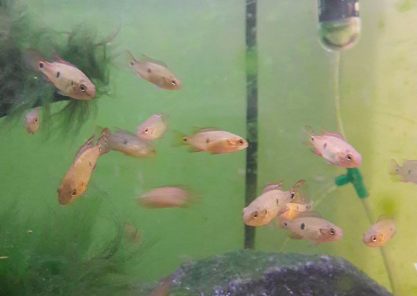|
Affiliate Disclaimer : We
work to provide tropical fish information and locate merchants who sell the products
you are looking for. If you make a purchase from any of the merchants we endorse, we
will earn a small commission at no additional cost to you. Thank you for your support!
Home > Jewel Cichlids | Everything you ever wanted to know about the Jewel cichlids

Jewel Cichlids | Everything you ever wanted to know about the Jewel cichlids

 Caring for Jewel Cichlids Caring for Jewel Cichlids
Caring for jewel cichlids doesn’t have to be a difficult responsibility. The key to ensuring that your pet cichlid has a long and happy life is to understand the needs of this species and provide a suitable environment. We are going to discuss all aspects of general care for jewel cichlids, but first we are going to go over a bit of background information about this species to give you a better idea of what kind of responsibilities you can look forward to.
Jewel cichlids are native to the rivers of western Africa, but surprisingly enough, they don’t really do well with other African cichlids species. The best tank-mates for this type of fish are cichlids of the American varieties. This species gets its name from their sparkly-colored scales and come in a variety of colors. As long as this species is well cared for and partnered with suitable tank buddies, they can make a very colorful and entertaining addition to your aquarium!
It’s important to know that while jewel cichlids usually only grow to about four inches in length, they can grow to be about six inches. This means that a pair of cichlids will need at least a 20 gallon tank, but if you want more of them you will need at least a 40 gallon tank. The more space you give this species, the less likely you are to see their aggressive nature. Again, it’s best to keep very fragile-mannered fish in a separate tank, as the jewel cichlid isn’t afraid to overstep the boundaries into aggressiveness if they feel necessary.
The good thing about this species is that they’re pretty hardy. As long as the water’s pH is between 6.5 and 7.5, and the temperature is kept between 75 and 80 degrees F, you should find them quite easy to keep. Jewel cichlids are can withstand older water, and by this I mean when it starts to turn a shade of yellow, however they will be happier and likely healthier if the water is kept clean and fresh. You may also want to put a few rocks in the aquarium to act as a little hidey-hole when the fish wants to be alone.
As for the cichlid diet, they should feed well on flakes and pellets. If you have bottom dwellers, be sure that they are getting their share of the food, as the cichlid will steal shrimp pellets and algae wafers in addition to their own food! With a healthy diet and good tank upkeep, a jewel cichlid should achieve the ripe old age of at least five years or longer.
While the cichlid is a pretty tough fish, it can be afflicted by freshwater fish diseases. These diseases range in symptoms, but if you keep a good eye on your fish, you should be able to notice any change in his normality early on. Red or inflamed gills, bloating or raised scales, white spots, rotting fins, fungal growth, and lethargic movements are just a few of the signs that can point to a health issue with your fish. If you notice any of these signs that do not improve with a good tank cleaning, change of water, and increase in oxygen levels, then you should take the fish to the veterinarian to determine what is causing the illness. If caught early on, there will be a better chance of saving the fish.
Jewel cichlids are not a very good choice for a newbie fish owner, nor are they the perfect addition to a community tank, due to their aggressiveness. Yes, they are quite hardy, but they still need the appropriate care in order to live a healthy and happy life. Best of luck!

References
|


